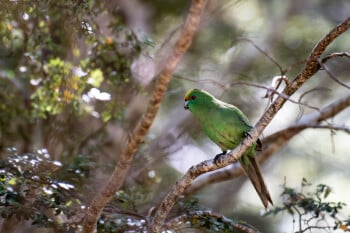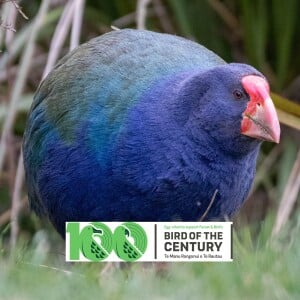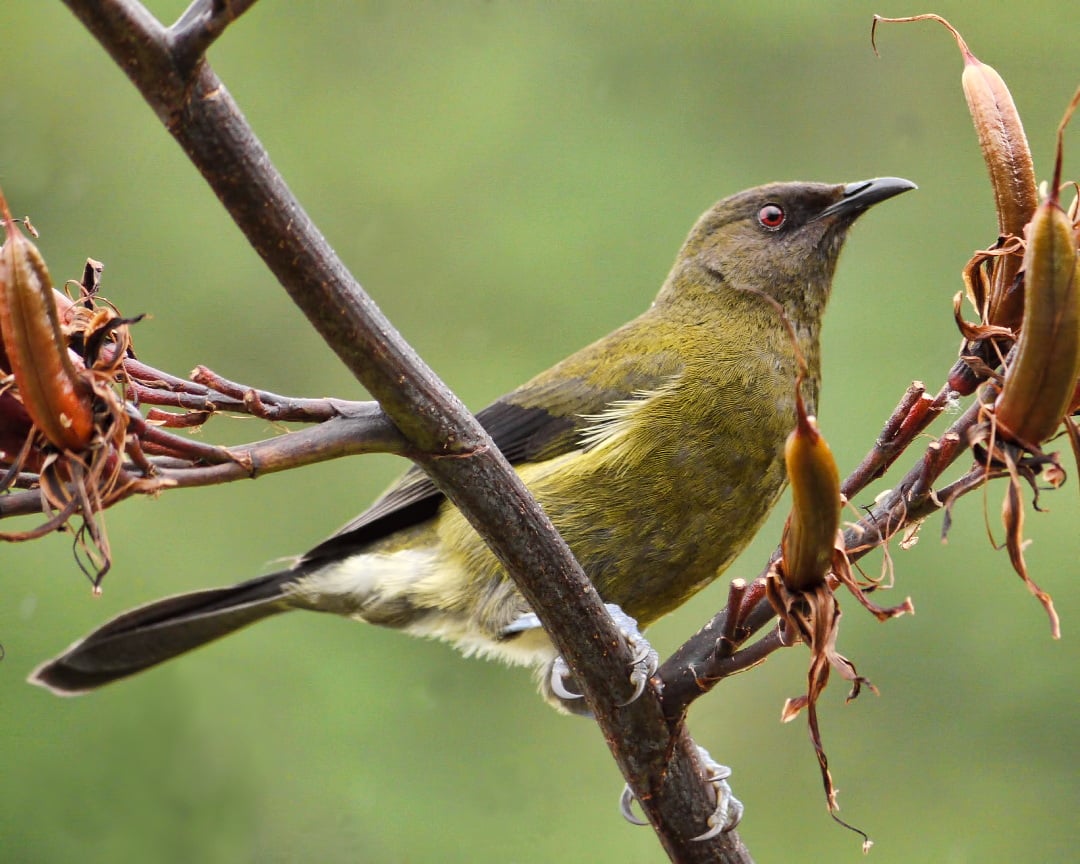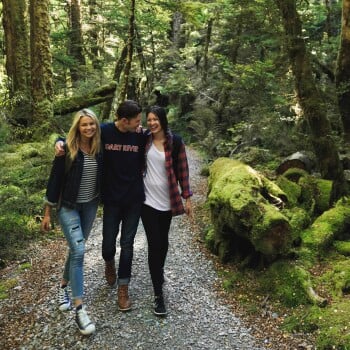- About Us
-
Trips
-
 Kiwi-Style Hiking
Kiwi-Style Hiking
-
 Great Walks
Great Walks
-
 Hiking Tours
Hiking Tours
-
Alpine Hikes
-
Custom Groups
- Huayhuash Trek
- Family Northern Explorer
- Family Southern Explorer
- Lake Waikaremoana Hike
- Women's Custom Tours
- Women's Southern Wilderness
- Coast, Canyons and Mountains
- Coastal Wanderer Custom Tour
- Don't Cross the Ladies
- Secret South Custom Tour
- Tekapo Hike
- West Coast Custom Tour
- World Heritage Custom Tour
-
- Blog
- Shortlist
- About Us
- Trips
- Blog
- Shortlist

Nov 8, 2023
Arguably, the outcome of Aotearoa’s most important annual election amongst our feathered friends holds a greater significance this year.
As well as Bird of the Year, voters will also be deciding on New Zealand’s favourite bird of the century!
Always a source of controversy, like in 2021 when a tiny bat, the pekapeka won, we excitedly anticipate the outcome as this year, extinct birds enter the polls.
New Zealand is known for its birds. In fact, they’re the only native animals we have on land, bar our sole native mammal, the aforementioned pekapeka.
Since the first people landed on New Zealand’s shores, and with them came rats and pigs (and many other pests followed), 51 of our endemic bird species have been wiped from the face of the earth.
Thanks to intensive conservation efforts throughout the country, some species remain on the brink that would otherwise be long gone, some specie’s populations are on the rise, and a few are even thriving. This year we also have the opportunity to vote for species long gone, but not forgotten.
Did you know that New Zealand has more to see than the famous Kiwi? Let’s explore some previous winners, and our top five votes for this year!
Previous Birds of the Year

Kākāpō - the heavyweight of the Parrot world
Imagine a three kilogram, flightless parrot. Thought to be extinct at one point, and now only exists in predator free sanctuaries. They would have our vote, but at Hiking New Zealand we believe every bird deserves a chance, and Kakapo has already won…twice
Pekapeka - ‘like a Bat out of Godwanaland!’
The long-tailed bat. New Zealand’s only native land mammal. In 2021 they rocked New Zealand’s world of birds when they launched their bird of the year campaign. Some couldn’t handle the idea that a mammal might win. But win the mighty 12 gram mammal did.
Piwouwou on the Routeburn track!
New Zealand’s only true alpine bird, the rock wren. Spanning only 10 cm in height and weighing in at approximately 16 grams, the rock wren spends its life above 900m, and is one of our greatest motivators to get above the bushline on the Routeburn Track near Milford Sound.
Our votes for this year
Going through the list and choosing only five favourites never gets easier, but here are our top five, in no particular order:

Kākāriki Karaka
A small native parakeet thought to be extinct twice and remains critically endangered. Hiking New Zealand’s predator control team has been working hard in their strongholds in the Poulter and Hawdon Valleys in Arthur’s Pass National Park. We’d love for this little guy to take the top step!
Kakaruia
The Chatham Island Black Robin boasts one of the greatest examples of successful conservation in New Zealand and the world. Once down to only five individuals, on the absolute brink of extinction. Now around 300 are alive, all of whom are descendents of Old Blue, who was the last breeding female in 1980. They exist on two tiny islands in the Chatham archipelago. Few people ever get to see these birds. They hold an extra special place in our hearts as a couple of our tree planters saw them while volunteering on Mangere island.
Huia
Simply, a gorgeous, almost mythical song bird. Such a distinct appearance; a striking black bird with white-tipped tail feathers and orange wattles. The females had an elegant, long, curved beak. Considered a taonga, or treasure, to Maori. Unfortunately, hunting and predation eliminated the Huia in the early 19th century. But it remains an icon all the same, and we honour the Huia’s memory.

Takahē
A flightless rail filled with personality. A living dinosaur. What more could you want? All but given up on, until in 1948 a determined Geoffrey Orbell who thought he’d heard one while tramping in Fiordland, found three. Now with a population around 400 strong, there are even some Takahē living outside of sanctuaries again, such as on the Heaphy Great Walk in Kahurangi National Park.
Piopio
Recognized by some as New Zealand’s greatest ever songbird, the piopio was last seen in the 1970s. This special bird is immortalised by the Māori name for Milford Sound: Piopiotahi. As legend has it, after the demigod Māui died, a single Piopio flew to Milford Sound to mourn.
While of course some of these birds are gone forever, keep an eye and an ear out on your tours to New Zealand. One of the best parts of hiking here is that it gives us the opportunity to see our native fauna.
To learn more about Bird of the Century, and to cast your votes, follow this link: Bird of the Year 2023







